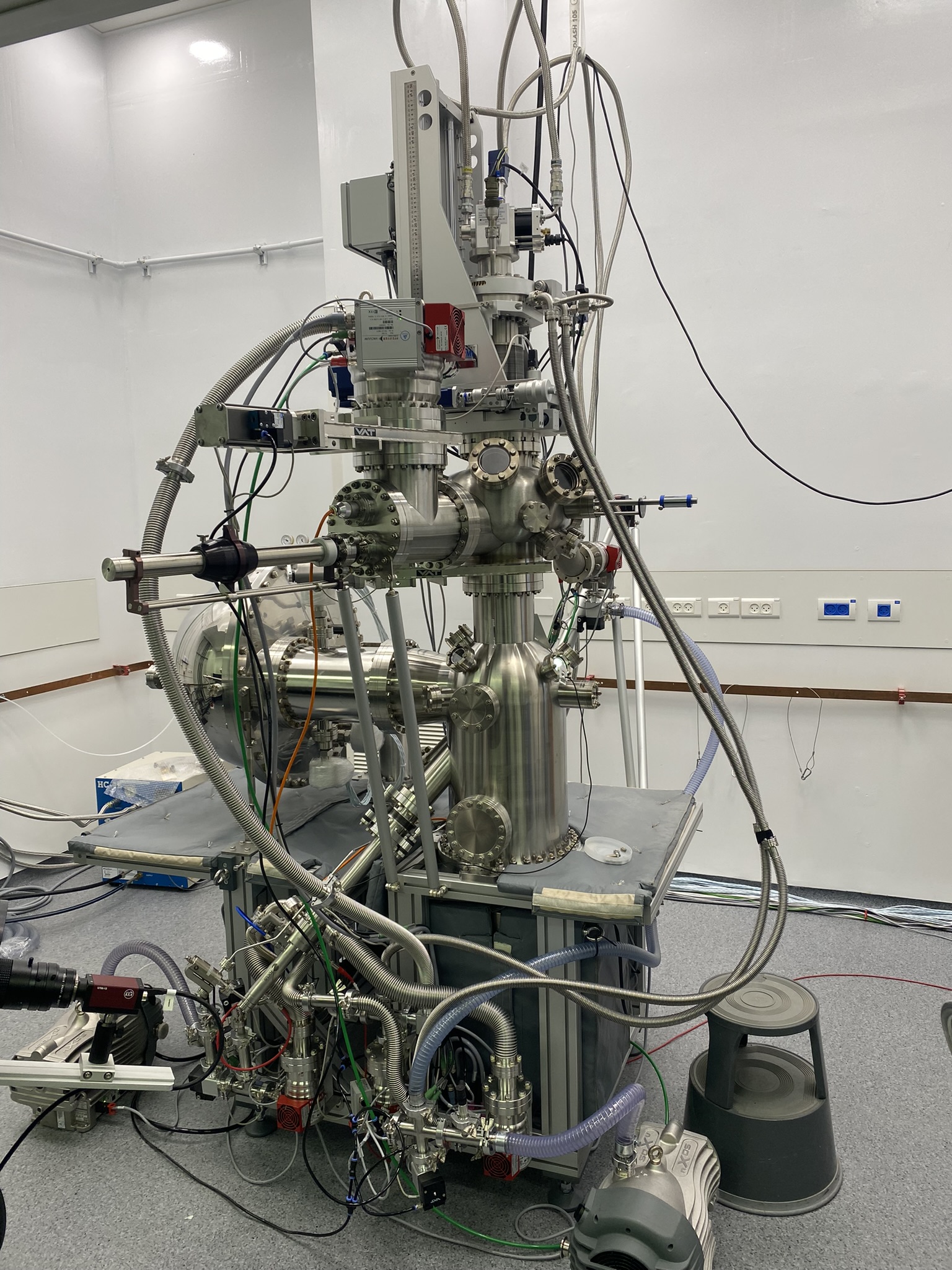Spectroscopy of Novel Materials
In our lab, we are interested in phenomena occurring in strongly correlated systems such as unconventional superconductivity, metal-insulator transition, magnetic ordering, and topological behaviors. The laboratory focus is (1) material synthesis in the form of thin films and heterostructures, (2) spectroscopy experiments using home-based ARPES and synchrotron facilities, and (3) in-house laboratory for bulk characterizations.
Scroll to learn more about the equipment we use.
ARPES
Angle resolved emission spectroscopy (ARPES) is based on the photoelectric effect and considered to be one of the most powerful techniques to study the electronic structure of solids. It has been proved to be particularly effective for measuring the electronic structure of condensed matter in momentum space since it allows direct detection of the single particle spectral function A(k,w) which contains lots of important information about electronic states including Fermi surfaces, energy band structure, Fermi velocity, energy gap, effective mass, carrier density, etc.
In our lab, we have ARPES system based on Scienta DA30 hemispherical analyzer and equipped with the HIS 14 light source. We also travel for ARPES experiments in user facilities, mainly at the SLS in Switzerland, Diamond in UK, and Elettra in Italy.

laser-mBE

A state of the are Laser Molecular Beam Epitaxy system is used for deposition of artificial quantum materials. This technique produces exceptionally high-quality thin film with monolayer precision in a nearly contamination-free environment. During synthesis, the LASER-MBE uses a high power UV pulsed laser beam (the forth harmonic of Nd:YAG laser with λ = 266 nm and up to 300 mJ/pulse) in order to ablate material from a target and transfer the ionized species to a substrate in the highly non-equilibrium way. The structural quality is monitored in-situ unique high pressure RHEED capable of operating in 400 mTorr O2 pressure (STAIB Instr.)